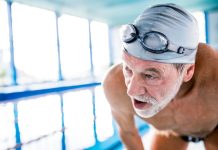
Stroke is a leading cause of disability and death worldwide. It occurs when blood flow to the brain is interrupted, leading to brain damage.
Rehabilitation after a stroke is essential to improve physical function, prevent further disability, and enhance quality of life.
Exercise is a crucial component of stroke rehabilitation, and several studies have demonstrated its benefits.
In this review, we will discuss the role of exercise in stroke rehabilitation and its effects on physical function, cardiovascular health, and mental health.
Types of exercise for stroke rehabilitation There are several types of exercise that can be used in stroke rehabilitation, including aerobic exercise, resistance training, and balance and coordination exercises.
Aerobic exercise is beneficial for cardiovascular health and can improve endurance and mobility.
Resistance training can improve strength and muscle mass, while balance and coordination exercises can reduce the risk of falls and improve balance.
Benefits of exercise in stroke rehabilitation
Improved physical function
Exercise has been shown to improve physical function in stroke survivors, including walking ability, balance, and muscle strength.
A study published in the Journal of Rehabilitation Medicine found that an exercise program consisting of resistance training and aerobic exercise improved walking speed and balance in stroke survivors.
Cardiovascular health
Stroke survivors are at an increased risk of cardiovascular disease. Exercise can improve cardiovascular health by reducing blood pressure, improving cholesterol levels, and reducing the risk of obesity and diabetes.
A study published in Stroke found that aerobic exercise reduced blood pressure and improved cholesterol levels in stroke survivors.
Mental health
Stroke survivors are at an increased risk of depression and anxiety. Exercise has been shown to improve mental health by reducing symptoms of depression and anxiety and improving mood.
A study published in the Journal of Psychiatric Research found that a home-based exercise program reduced symptoms of depression and anxiety in stroke survivors.
Quality of life
Exercise can improve overall quality of life in stroke survivors by improving physical function, reducing the risk of falls, and improving mental health.
A study published in the Journal of Stroke and Cerebrovascular Diseases found that an exercise program consisting of aerobic exercise and resistance training improved quality of life in stroke survivors.
Challenges and considerations
There are several challenges and considerations when implementing an exercise program for stroke survivors.
First, stroke survivors may have physical limitations that require modifications to the exercise program.
For example, some stroke survivors may require assistance with balance and coordination exercises.
Additionally, some stroke survivors may have cognitive impairments that affect their ability to follow instructions and perform exercises correctly.
Another consideration is the timing of exercise in stroke rehabilitation. Exercise can be implemented in different stages of stroke rehabilitation, including acute, subacute, and chronic stages.
The type and intensity of exercise may need to be adjusted based on the stage of stroke rehabilitation and the individual’s physical abilities.
Conclusion
Exercise is a crucial component of stroke rehabilitation and can improve physical function, cardiovascular health, mental health, and overall quality of life in stroke survivors.
However, there are several challenges and considerations when implementing an exercise program for stroke survivors, including physical limitations and cognitive impairments.
Healthcare professionals should work closely with stroke survivors to develop personalized exercise programs based on their individual needs and abilities.
Further research is needed to determine the optimal type, intensity, and timing of exercise in stroke rehabilitation.
If you care about stroke, please read studies about links between vitamin D and heart disease, stroke, and death, and Olive oil could help lower risks of heart disease and stroke.
For more information about heart health, please see recent studies about drug combo that can cut risk of stroke and heart attack by half, and results showing coconut sugar could help reduce artery stiffness.
Copyright © 2023 Knowridge Science Report. All rights reserved.



